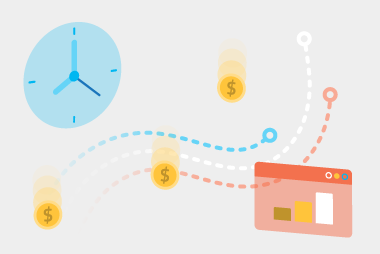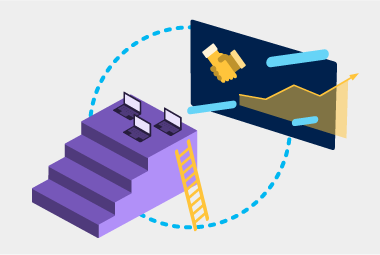- reduce costs involved in processing invoices
- process invoices faster
- make faster payments
- reduce data entry errors
- move to a more secure way of exchanging invoices.
Your customers and suppliers are implementing eInvoicing
As businesses and government agencies enable eInvoicing, there’ll be a bigger push for their customers and suppliers to join them. Some organisations are providing incentives to make the transition more attractive. For example, government agencies here in Australia who can receive eInvoices have promised to pay them in five days for contracts up to $1 million. So, if you have multiple partners who are using eInvoicing, now might be the time to get on board. You’ll can start exchanging eInvoices with them, and future proof your investment by connecting with other customers and suppliers as they come on board.Data entry is taking up too much time and resources
If you’re struggling to keep up with all your work, or if you’re looking to hire extra staff to help with invoice processing, it might be time to look at eInvoicing. Invoice processing can be time consuming for accounts payable and receivables teams because of the manual inputting, which is prone to errors. Processing a paper invoice is estimated to take 23 days, and that’s when the process runs smoothly. As a business processes more invoices, this can take even longer. eInvoicing is significantly streamlined and automated, reducing processing time. eInvoicing can reduce it by up to 65%.You’re seeing too many data entry errors
Processing invoices manually or using OCR scanning can be error-prone. If you’re seeing a high error rate, it could be worth considering eInvoicing. The data is only input once – when the supplier inputs it into their software. And it’s no re-entry or scanning required – the source data is used all the way through the process. eInvoicing can reduce errors by 37% compared to manual invoicing.You want to reduce costs
All businesses are looking for ways to reduce costs. One process that’s often forgotten is invoicing. Traditionally, costs attributed to invoicing can be:- Printing: even if you’re using PDFs, invoices may be printed. You’ll need to pay for paper, ink and even printer maintenance.
- Labour: you need people to process invoices and this only increases as your business grows.
- Filing: if you’re storing hard copies of your invoices, the costs can add up.
- reduce accounts receivable costs by up to 44%
- reduce archiving costs by up to 32%
- reduce the cost of receiving an invoice by up to 90%
- reduce the cost of archiving accounts payable invoices by up to 67%
- cost less than $10 to process
- reduce accounts payable labour by 25-40%.
You’re undertaking a digital transformation review
Businesses often look to digital transformation to improve business process and performance. The result of it should also provide more accurate data to help with analysis and decision making. Finance teams can realise fantastic benefits when they implement eInvoicing. eInvoicing can automate the invoicing process and significantly reduce manual inputting. This improves data accuracy for reporting and decision making, making it easier to see real-time liability position. The other great thing is that it works with your existing accounting software, so there’s no need for further investment.Low cashflow
High competition in the business environment has led to an increase in credit sales, particularly in Australia. This has led to a high volume of suppliers struggling with cashflow. Economic downturns have added further pressure, so now more than ever, businesses are looking for ways to collect receivables as quickly as possible. eInvoicing helps to speeds up the time it takes to get to a customer. It also speeds up invoice processing and payment for buyers. Studies show eInvoicing can improve on-time payment by more than 15%. If you think it’s time for your business to implement eInvoicing, request a call from one of our EDI experts.Request a call
Chat with one of our experts
Just fill out your details below and we'll be in touch within one business day.

